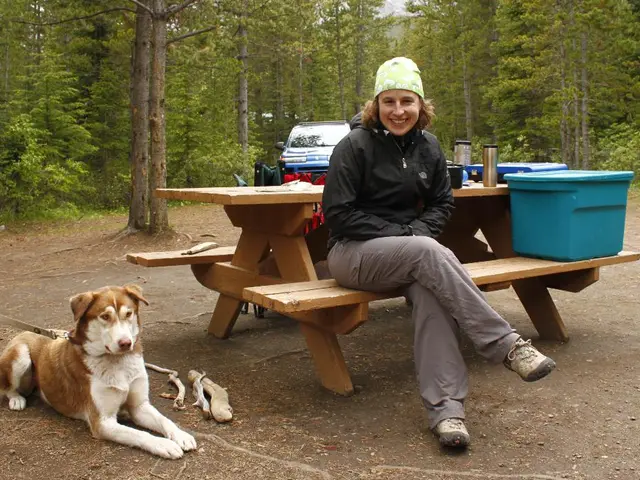Seasonal Gardening Reads: A Guide for Every Time of Year
In our latest initiative, we present our Simplified Approach to Canning, designed to help you make the most of your vegetable garden in colder climates. Here, we delve into the key differences between raised beds and container gardening, and the advantages each method offers.
When it comes to vegetable gardening in colder climates, the choice between raised beds and containers can be a significant one. The main differences centre around root and soil temperature control, size and space, maintenance requirements, plant suitability, and insulation potential.
Root and Soil Temperature
Containers, due to their tendency to absorb and retain heat, can cause root temperature fluctuations. This can be beneficial for warm-loving plants like tomatoes and peppers but can stress cool-loving roots such as onions or celery. Raised beds, being in contact with the ground, have more stable soil temperatures, providing more insulation than containers but less than fully in-ground gardens.
Size, Space, and Plant Suitability
Containers limit root growth and space, requiring the selection of smaller or container-savvy plants and frequent watering/fertilizing. Raised beds offer more space and soil volume, allowing for larger crops and denser planting, making them better suited to a wider variety of vegetables.
Watering and Maintenance
Containers dry out quickly and require frequent attention, often needing watering once or twice a day in warm weather and regular feeding with liquid fertilizers. Raised beds retain moisture better but still require consistent watering and fertilization.
Insulation and Protection in Cold Climates
Containers are more exposed and vulnerable to freeze damage unless moved indoors or insulated using cold frames or other structures. Raised beds can be insulated by adding straw mulch, removable covers, or cold frames, offering more stable but less flexible protection.
In summary, raised beds provide more stable soil temperatures and greater root space suitable for a broader range of vegetable crops with somewhat less watering frequency, ideal for sustained outdoor growth in colder climates. Containers offer flexibility and season extension options but demand vigilant watering, careful plant selection, and management of root temperature extremes, requiring more intensive care especially in cold weather.
Stay tuned for more updates on various topics on our website. For those interested in learning more about gardening, we recommend "The All New Square Foot Gardening" by Mel Bartholomew, a classic gardening book that focuses on growing more produce in less space.
[1] Bartholomew, M. (2012). The All New Square Foot Gardening: Grow More in Less Space!. Square Foot Gardening Foundation. [2] Dowding, C., & Hafferty, S. (2019). No Dig Organic Home & Garden. Permanent Publications. [3] Coleman, E., & Damrosch, B. (2009). The Winter Harvest Handbook: Year-Round Vegetable Production Using Deep-Walled Plastic Tunnels. Chelsea Green Publishing. [4] Coleman, E., & Damrosch, B. (2014). Four-Season Harvest: Organic Vegetables from Your Home Garden All Year Long. Chelsea Green Publishing. [5] Coleman, E. (2013). The New Organic Grower: A Master's Manual of Tools and Techniques for Small-Scale Market Farming. Chelsea Green Publishing.
- In urban homesteads, raised beds are a popular choice for vegetable gardening in cold climates due to their ability to maintain more stable soil temperatures.
- Harvesting vegetables from a garden can be taken a step further with canning, helping to preserve the produce for later use.
- Composting is an essential part of any home-and-garden lifestyle, as it provides organic nutrients for the soil in raised beds.
- Permaculture principles can be applied to urban homesteads, promoting sustainable and efficient use of resources for vegetables grown in raised beds.
- The books "The All New Square Foot Gardening" and "No Dig Organic Home & Garden" offer valuable insights into garden planning and techniques for raised bed gardening.
- With the right practices, it's possible to extend the growing season for a variety of vegetables in cold climates using techniques such as greenhouses and cold frames.
- Cold-climate gardening requires careful plant selection, as some vegetables, like onions and celery, may struggle with root temperature fluctuations in containers.
- Family dinners can be enriched by homegrown, organic vegetables from a raised bed garden, following recipes tailored to the season.
- Lifestyle changes, such as adopting sustainable gardening practices and reducing the carbon footprint by growing vegetables at home, contribute positively to the environment and provide a sense of accomplishment.




